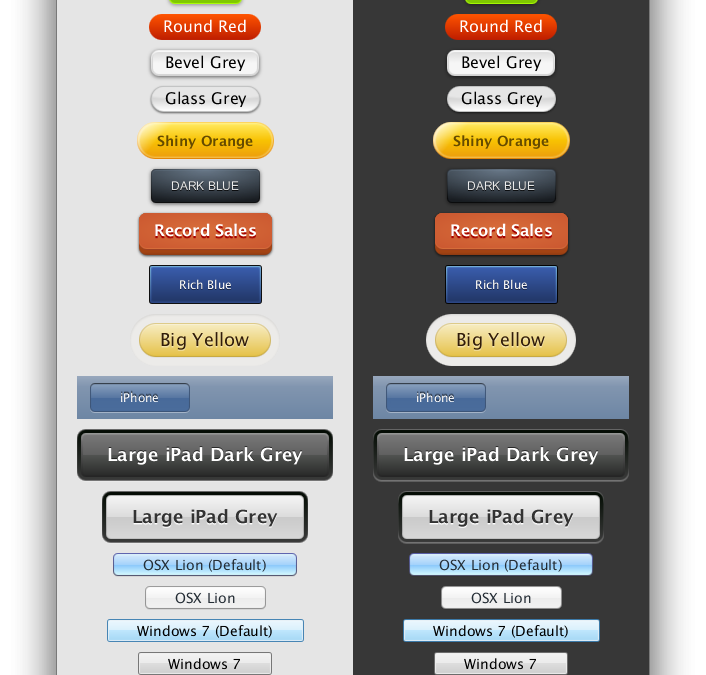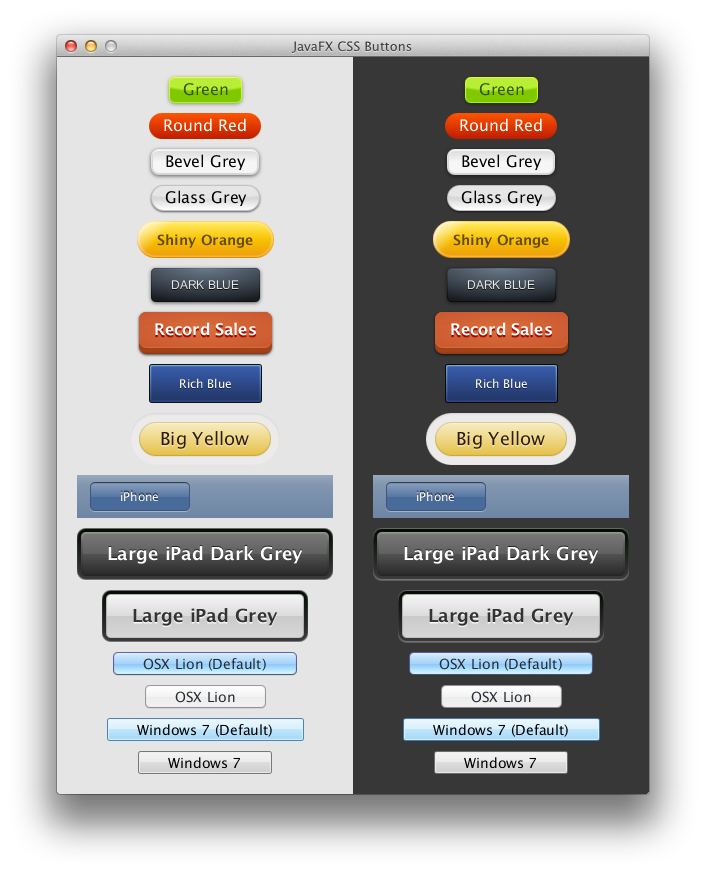FX Experience Has Gone Read-Only
I've been maintaining FX Experience for a really long time now, and I love hearing from people who enjoy my weekly links roundup. One thing I've noticed recently is that maintaining two sites (FX Experience and JonathanGiles.net) takes more time than ideal, and splits the audience up. Therefore, FX Experience will become read-only for new blog posts, but weekly posts will continue to be published on JonathanGiles.net. If you follow @FXExperience on Twitter, I suggest you also follow @JonathanGiles. This is not the end - just a consolidation of my online presence to make my life a little easier!
tl;dr: Follow me on Twitter and check for the latest news on JonathanGiles.net.

by Jasper Potts | Dec 20, 2011 | Controls, CSS, Tips n' Tricks, UI Design
A number of people have asked me recently can I create this look or that look using CSS in JavaFX. Or they have said that you could never do that! So I thought I would do a little experiment and try recreating a bunch of common button styles purely using CSS. So without further ado, here is the result:

(more…)
by Jonathan Giles | Dec 18, 2011 | Links
Here we go again…..enjoy! 🙂
- JavaFX 2.0.2 was released this week, bringing with it a heap of bug fixes, as well as a number of new features including SWT interoperability, and improved mouse scroll APIs. Additionally, the license was updated to allow for redistribution.
- A new JavaFX 2.0 Developer Preview release has been made available for Mac OS X.
- Coinciding with the release of JavaFX 2.0.2, the JavaFX Documentation team put out a number of new articles, covering topics such as JavaFX menus, styling charts with CSS, handling events, and others.
- The JavaFX roadmap has been updated to give more detail about future releases.
- Tom Schindl has announced the release of e(fx)clipse 0.0.9, as usual it comes with bug fixes and a few new features, including improved wizards, improvements to his fxgraph DSL, and early FXML support.
- Sven Reimers and Geertjan Wielenga have announced the eFX project, which is a JavaFX RCP based on the NetBeans RCP.
- John Smith has blogged about having a code editor in JavaFX by embedding the JavaScript CodeMirror editor inside a JavaFX WebView.
- Pedro Duque Vieira has blogged about using ContextMenu in both JavaFX, and when embedded within a JFXPanel inside Swing.
- Dustin Marx has blogged “Hello JavaFX 2.0: Introduction by Command Line“.
by Jonathan Giles | Dec 12, 2011 | News
The JavaFX 2.0.2 release is now available for download. Along with a heap of bug fixes, notable improvements include:
- Interoperability with the Standard Widget Toolkit (SWT).
- New scroll event that handles scrolling on two axes and replaces the
MouseEvent.MOUSE_WHEEL_ROTATED event.
- Change of license, which enables third party developers to redistribute the JavaFX Runtime with their applications in accordance with the Oracle Binary Code License Agreement for the Java SE Platform Products and JavaFX.
- Updated doclet for the Javadoc tool that is used to generate JavaFX API documentation in HTML format.
- Updated NetBeans projects for the JavaFX samples for use with the NetBeans 7.1 release.
The JavaFX documentation team has also put out more documentation to explain a number of areas, including:
- Styling Charts with CSS describes how to alter the visual appearance of charts in your application. Using the various CSS classes and properties you can set an alternative color scheme, add images and graphical effects, modify the chart legend and plot, and even invent new chart symbols.
- The Menu chapter of the JavaFX UI Controls tutorial describes how to build a menu bar in your application, add menu items, assign specific actions to each item, and set a context menu for a node.
- Handling JavaFX Events describes how to create and use event handlers and event filters to process user interactions with your application.
- Using a Doclet with JavaFX describes how to use the Javadoc doclet that was created for use with JavaFX source code. Using the doclet with the Javadoc tool produces customized HTML documentation.
- Deploying JavaFX Applications describes a new JavaFX Ant helper parameter, <fx:argument>. Also new is a mechanism for passing images to the <fx:deploy> task. Use <fx:icon> to pass icons for various purposes or <fx:splash> to pass a splash screen image for Web Start applications.
Relevant links:
by Jonathan Giles | Dec 11, 2011 | Links
Welcome to yet another JavaFX links of the week. There is, as seems to be the case these days, a heap of links. Hopefully you all find something of interest. Enjoy! 🙂
Catch you all next week…
by Jonathan Giles | Dec 4, 2011 | Links
Ok, this post is slightly early, but I’m not going to be around much for the next three days, so I thought I’d sneak it out a few hours early rather than make you all wait. Also, because I have very, very little time to write this post, it’s going to be a little more succinct than usual. All will return to usual next week, but for now, please enjoy! 🙂
That’s that for another week. I’ll catch you back here in a weeks time…..




